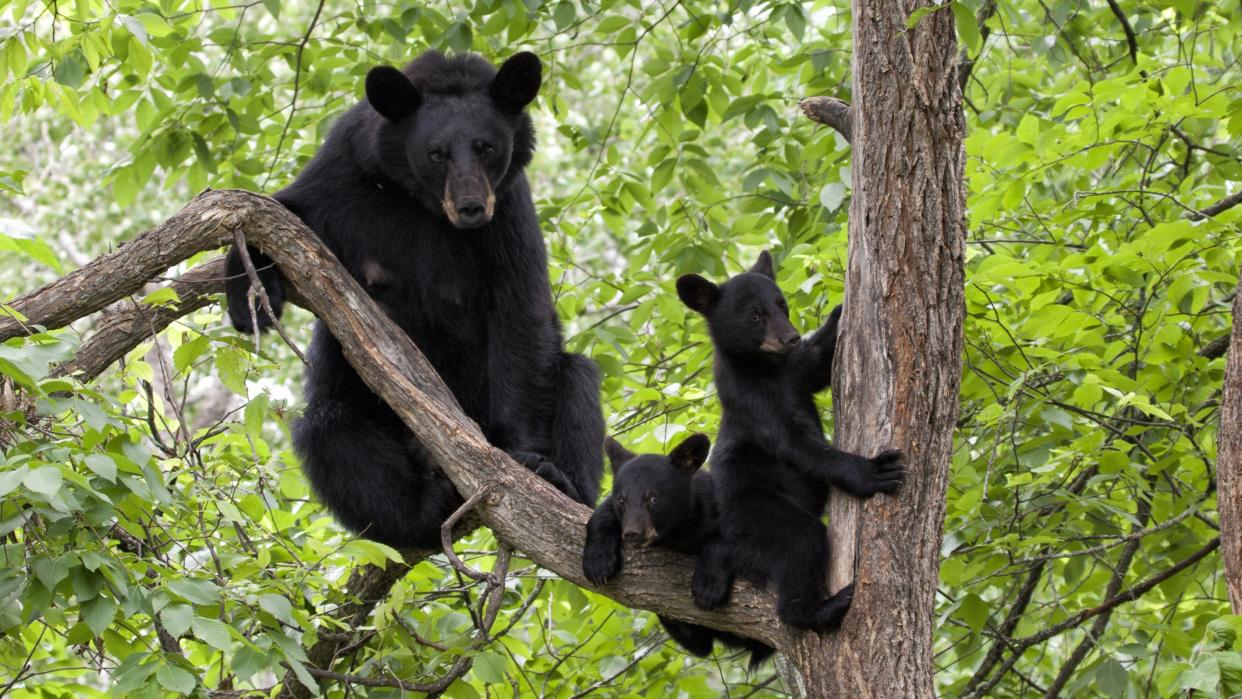Mother bear euthanized after charging children in Colorado woodland

A black bear has been euthanized after behaving aggressively and charging two teenagers and a wildlife officer in Colorado.
In a news release, Colorado Parks and Wildlife (CPW) explained that it had received a call on Wednesday, which was initially described as a bear attack in which two boys (aged 12 and 13) had been injured in dense woodland. After arriving, officers found that the bear had charged the boys, one of whom had suffered minor injuries after running into a tree branch while trying to escape.
CPW officers, together with the local police department, began searching for the bear and her cubs. They soon found the sow, which continued to show aggressive behavior, and decided to euthanize the animal for public safety.
After many hours of searching, including use of a drone, officers eventually found the two cubs, which were tranquilized with darts. The animals were old enough to survive alone, and CPW officers drove them to the CPW Southeast Region office where they were tagged them for relocation. They were then given a drug to reverse the effects of the tranquilizer, but sadly one of the animals didn't come round.
“This was an unfortunate situation where a sow had become dangerously aggressive toward people instead of being scared of humans,” said Tim Kroening, CPW wildlife manager for the Pikes Peak area.
“There was no choice but to put it down after it repeatedly charged people. And the death of the cub was a sad reminder of why CPW is reluctant to tranquilize wildlife. There are many risks involved when tranquilizing wildlife.”
Keeping wildlife wild
Habituation is a serious problem where wild animals lose their natural wariness of humans, and may approach and confront people rather than retreating. The National Park Service (NPS) describes it as something that happens when animals are repeatedly exposed to a stimulus (in this case human contact) and eventually stop responding to it.
It's often caused by people feeding wildlife deliberately, or leaving food where it can be accessed by a foraging animal. People approaching wild animals for photos can also be a factor. This can be dangerous for both animals and people.
"When animals stop seeing people as a threat, they can be unintentionally harmed by people," says the NPS. "In Grand Canyon National Park [for example], elk are a common sight along the roads. Naturally, they should be scared of people, and should run away if a person leaves their car and approaches the elk.
"Unfortunately, this happens very frequently, and the elk have become habituated to people and cars. Every year, many elk are killed in collisions with cars because they have lost their fear of roads."
The best way to avoid this happening is to always secure food and garbage, and never approach wild animals. Instead, it's safest to appreciate them from a distance using a telephoto lens or pair of binoculars.
Get a free 148-page ebook celebrating the world's greatest National Parks

